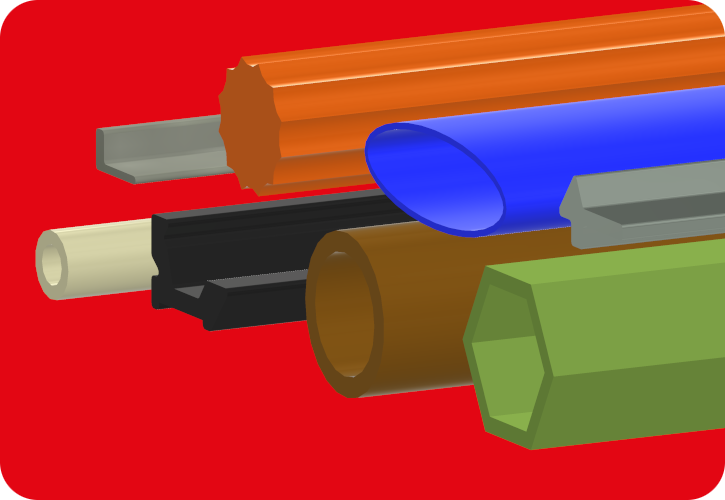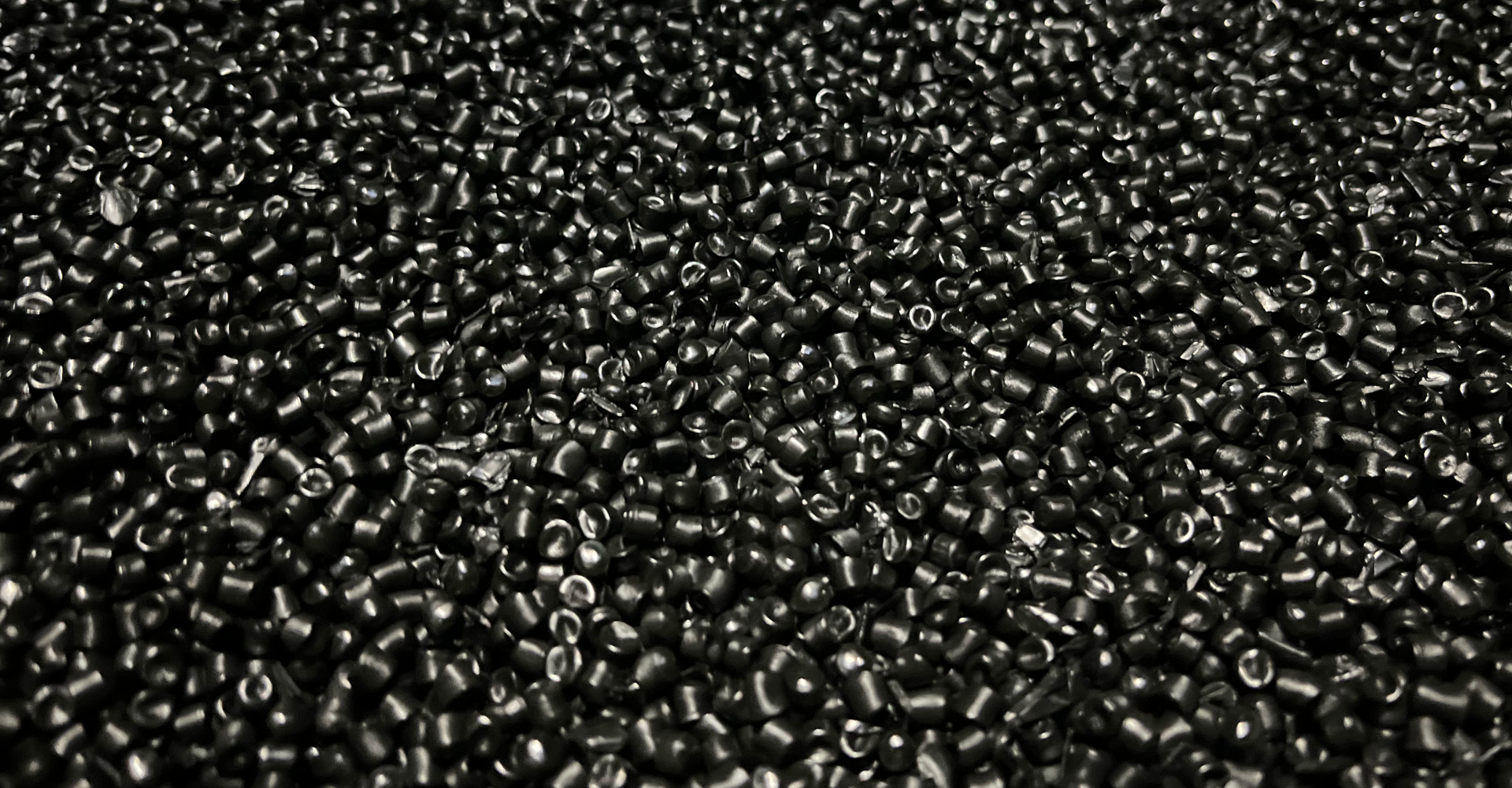Thermoplastische Elastomer – TPE
Standard-Plastic
In General | Technical Data of TPE | Advantages | Tradenames of TPE

Plastic Profiles made of thermoplastic Elastomers – TPE
Thermoplastic elastomers, or TPE for short, combine the plastic properties of elastomers with the processing possibilities of thermoplastics. As a result, the rubber-like properties of elastomers can be used to advantage, while the TPE is processed in injection molding or extrusion. A major area of application for thermoplastic elastomers is hard/soft combinations in 2-component injection molding or co-extrusion.
TPE distinguishes many different types. Basically, the polymer blends consist of a hard thermoplastic matrix, which is added with crosslinked or non-crosslinked elastomer particles as a soft phase. Some examples of thermoplastic elastomers are TPA, TPC, TPO, or TPS.

In the TPA synthesis, polyamides are added with polyether groups. This significantly alters the elastic properties of the polyamide so that their behavior closely resembles that of elastomers. The more precise properties depend on the degree of admixture of the polyether groups. Typical applications are hoses for the automotive sector, windshield wiper blades, tubes, hoses and profiles for mechanical engineering and vehicle construction.
The TPC is a block copolymer and very similar to the linear polyester. In structure, polyalkylene ether diols and/or long chain aliphatic dicarboxylic acid esters are combined with PBT segments. Typical applications are compressed air and hydraulic hoses, cable sheathing, hoses, tubes and belts for automotive, mechanical engineering and other industries.
Olefin-elastomer blends are composed of a hard thermoplastic matrix of the olefin group combined with a soft elastomer phase. Either crosslinked or uncrosslinked rubber is used as the elastomer, resulting in the TPE being referred to as TPV (crosslinked rubber) or TPO (uncrosslinked rubber). The properties of polymer blends are highly dependent on the blend ratios. For example, a blend of 90% PP already has reduced stiffness and increased impact strength at low temperatures. Typical applications include hoses, wire and cable sheathing, bumpers, seals and more in industries ranging from automotive to leisure.
Binder + Wöhrle processes TPO and TPV in plastic extrusion as well as in plastic injection molding. B + W has different types in use and produces customized plastic pipes, hoses -profiles, -sheathings, ¬connectors and much more in the diameter range of 0.5 – 50 mm.

Technical Data
Advantages of TPE
+

Tradenames of TPE
Ensolt, Santoprene, Foprene, Sarlink, …


